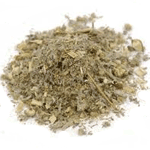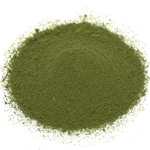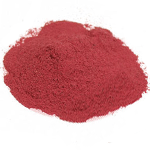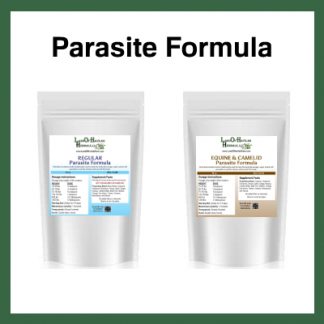Description
Wormwood is an extremely bitter remedy–next to rue the bitterest herb known, but it is a valuable stimulative tonic to the digestive system. The leaves possess antiseptic properties and are very resistant to putrefaction, and counteract the effects of poisonous plants such as hemlock, toadstool, etc.
The leaves and flowers expel and they are excellent for correcting, toning the liver & clearing a bilious condition in the body. The oil is valuable for external use as a very stimulating liniment. A woody rootstock that produces many bushy stems 2-4 feet high. It bears alternate, bi-to tri-pinnate leaves with long, obtuse leaves. The numerous tiny, yellow-green, rayless flower heads grow in leafy panicles. Found in rocky hillsides and wastelands. It is a anthelmintic, antiseptic, antispasmodic, carminative, cholagogue, febrifuge, stimulant & stomachic.
Origin(s): Albania, Bulgaria, Croatia, Ecuador, Hungary, Poland, United States.
Latin Name(s): Artemisia absinthium
Also known as: Absinthium, green ginger, absinthe, old woman, southernwood.
Plant Part(s) Used: Herb.
Appearance: Yellowish green.
Aroma: Without noticeable scent.
Taste: Bitter.
GMO Status: Non-GMO.
Allergen: None.
Additives: Free of any additives or preservatives.
Applications / Preparations: Can be put into capsules, teas, wine or infused as an herbal extract. For cosmetic use can be put in dream / sleep pillows. For household use can be used to repel & kill insects.
Storage: Store in a sealed container in a cool, dry place.
Shelf Life: It is very difficult to pin down an exact expiration date for most single herbs as they do not really expire, they lose potency or strength over time but will still have value. Unlike synthetic material or drugs, herbs can contain many constituents that contribute to their medicinal effects. Even if when we know what the active constituents are, there are often many of them in a single herb, each with different rates of degradation. Some herbs lose their effect more easily. Other herbs that possess more stable compounds such as alkaloids or steroids will last much longer.
A huge part of the degradation rate of herbs depends also on the storage conditions of the herb, & even on the quality of the herb before storage – how it was grown, harvested, dried & processed. If the product is left in hot places or open to sunlight then it will degrade much quicker than if it was stored in cool, dry place & sealed tightly.
A good rule of thumb is that herbs should be stored no longer than 2-3 years but many herbs will have great strength much longer than that. To determine if a an herb is still good you can check the appearance & aroma. Herbs that are no longer acceptable will have lost much of its vibrant color & will instead appear dull & faded. The bigger key though is to smell the raw materials to see if the potent aroma is still present.
Note: Do not use as a single herb in large amounts during pregnancy.







Reviews
There are no reviews yet.